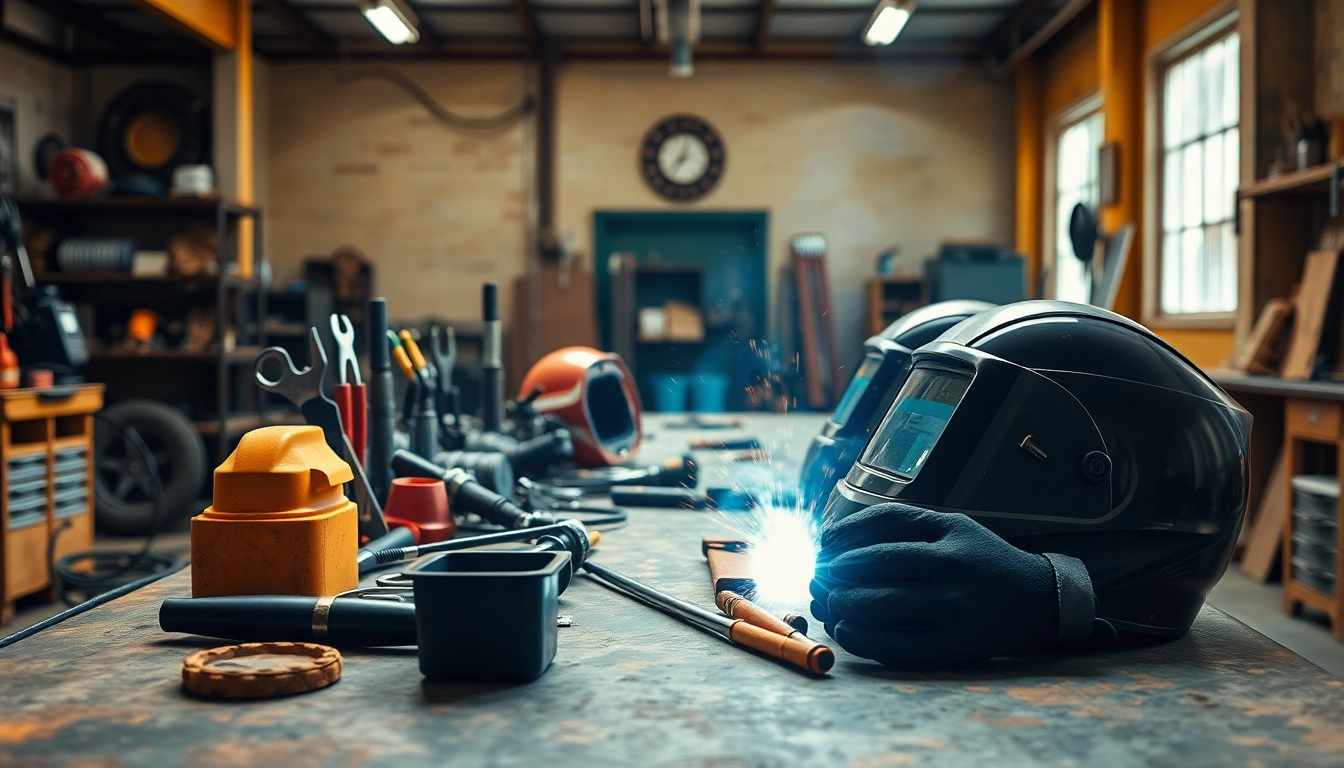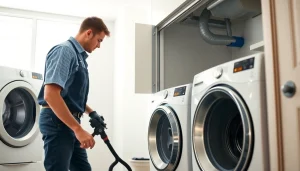Understanding Welding Supplies
Welding is an integral component of many manufacturing and construction processes, requiring a variety of materials and tools to produce high-quality joints and structures. Selecting the right welding supplies is essential not only for achieving superior results but also for enhancing safety and efficiency. This guide will delve into the significance of welding supplies, key types available, and how to choose the right equipment for your specific needs.
The Importance of Quality Welding Supplies
Welding supplies, including electrodes, wires, torches, and safety gear, directly impact the quality of the weld and the safety of the operator. Poor-quality supplies can lead to weak welds, increased rework, and even workplace accidents. High-quality welding supplies ensure:
- Enhanced Weld Quality: Using superior materials leads to stronger joints and improved aesthetic finishes.
- Increased Safety: Quality supplies are designed to meet safety standards, minimizing risks during operation.
- Cost-Effectiveness: Investing in quality tools reduces the likelihood of future costs associated with repairs and replacements.
Key Types of Welding Supplies
Understanding the various types of welding supplies is essential for making informed purchasing decisions. Below are some key categories:
- Welding Machines: Essential for producing the welds, including MIG, TIG, and stick welders.
- Consumables: Items such as welding rods, electrodes, and filler materials that are consumed during the welding process.
- Protective Equipment: Helmets, gloves, jackets, and eye protection to ensure safety for welders.
- Accessories: Tools like clamps, grinders, and brushes that support the welding process.
How to Choose the Right Welding Equipment
Selecting the right welding equipment involves various considerations:
- Type of Welding: Understanding whether you need MIG, TIG, or Stick welding equipment based on your project needs.
- Material Type: Select supplies that are compatible with the materials you will be welding, such as steel, aluminum, or stainless steel.
- Project Size: Consider the scale of your projects which can dictate the size and power of the welding machine required.
- Budget: Determine a budget while prioritizing quality and reliability.
Must-Have Welding Tools for Professionals
Equipping yourself with the right tools makes all the difference in welding efficiency and output. Here are must-have items every professional welder should own.
Essential Tools Every Welder Should Own
Beyond the primary welding equipment, several essential tools are critical for every welder’s toolbox:
- Welding Helmet: Protects the eyes and face from harmful rays and sparks.
- Gloves: Provides protection against burns and injuries. Look for materials that offer flexibility while also ensuring safety.
- Welding Jacket: Made from flame-resistant materials, these jackets protect the body from heat and sparks.
- Chipping Hammer: Used to remove slag from welds, promoting cleaner work.
- Wire Brush: Essential for preparing metal surfaces before welding to ensure a strong bond.
Welding Safety Gear You Can’t Ignore
Safety should be a top priority for anyone involved in welding. The following safety gear is crucial for protecting welders:
- Respirators: Protects against inhaling harmful fumes and gases.
- Face Shields: Provides additional face protection from infrared radiation.
- Welding Boots: Steel-toed boots provide foot protection from heavy equipment and materials.
- Ear Protection: Protects hearing from noise generated by welding equipment.
Advanced Equipment for Expert Welders
Experienced welders may require more specialized and advanced tools to handle complex projects:
- Multi-Process Welders: Capable of performing various welding types, providing versatility.
- Plasma Cutters: Used for cutting metal quickly and accurately, enhancing workflow.
- Welding Positioners: Adjust the workpiece to the ideal angle for better access and precision.
- Fume Extractors: Essential for maintaining a safe working environment by removing harmful fumes.
Welding Techniques and Their Supplies
Different welding methods necessitate specific supplies tailored to their unique processes. Understanding these techniques can optimize your project outcomes.
Common Welding Methods Explained
Here’s a brief overview of popular welding methods:
- MIG Welding: Utilizes a continuous wire feed and is ideal for beginners and industrial applications due to its speed and efficiency.
- TIG Welding: Known for its precision and control, it uses a non-consumable tungsten electrode to produce high-quality welds, particularly on thin materials.
- Stick Welding: A versatile method that is suitable for outdoor use and dirty or rusty materials but requires more skill to master.
Specific Supplies for MIG, TIG, and Stick Welding
Each welding technique requires specific equipment and consumables:
- MIG Welding Supplies: Welding wire, shielding gas (usually argon and CO2), and MIG gun.
- TIG Welding Supplies: Tungsten rods, filler rod, shielding gas (typically pure argon), and TIG torch.
- Stick Welding Supplies: Electrodes, welding machine (stick welder), and cables.
Choosing Supplies for Unique Welding Projects
Each project may present unique challenges that require tailored supplies:
- Project Material: Select specific filler materials that match the base metal for strength and compatibility.
- External Conditions: Consider protective gear and equipment suited for outdoor work or unusual environments (e.g., wind, rain).
- Weld Appearance: Depending on whether a clean appearance is required, you may need to choose higher-quality consumables.
Purchasing Welding Supplies Online
The convenience of online shopping has revolutionized how welders acquire their supplies. Understanding the online landscape can enhance your purchasing experience.
Where to Buy Quality Welding Products
Finding reputable suppliers is critical for acquiring quality welding products. Consider looking for:
- Specialty Welding Stores: Websites that exclusively focus on welding supplies often provide the best selection and expertise.
- Industrial Supply Companies: Larger suppliers may offer competitive pricing and a wide array of products.
- Manufacturer Directives: Purchasing directly from equipment manufacturers can ensure authenticity and quality.
Understanding Pricing for Welding Supplies
Pricing in the welding supply market can vary widely based on quality and brand. Here are some factors that affect costs:
- Brand Reputation: Well-known brands often have higher prices driven by their reliability and support.
- Material Quality: High-quality materials can lead to higher initial costs but can save money in the long run with less waste and fewer replacements.
- Sales and Discounts: Many online suppliers offer seasonal promotions, making it a good opportunity to stock up.
Shipping Options and Considerations
When ordering welding supplies online, consider the following shipping options:
- Standard Shipping: Often the most economical, but delivery times can be longer.
- Expedited Shipping: A faster option when you need supplies urgently, though it comes at an added cost.
- Free Shipping Threshold: Many suppliers offer free shipping on orders over a certain amount, encouraging bulk purchases.
Maintaining and Storing Welding Supplies
Proper maintenance and storage of welding supplies can prolong their lifespan and effectiveness. Implementing best practices can save time and expenses.
Best Practices for Welding Equipment Maintenance
Regular maintenance of equipment ensures optimal performance:
- Routine Inspections: Regularly checking hoses, wires, and connections can catch issues early.
- Cleaning: Keep equipment clean from spatter and debris to enhance performance and flexibility.
- Lubrication: Moving parts should be lubricated as recommended by the manufacturer to ensure smooth operation.
Organizing Your Welding Supplies Efficiently
Efficient organization saves time and improves workflow:
- Toolboxes: Use labeled toolboxes or carts to keep tools easily accessible and organized.
- Storage Bins: Store consumables like wires and electrodes separately to prevent contamination.
- Maintenance Log: Keep a log for tracking usage and maintenance to predict when to restock or service equipment.
Tips for Long-lasting Welding Tools
To ensure that your welding tools serve you well over time:
- Follow Manufacturer Guidelines: Each tool may have specific care instructions that should be followed.
- Proper Handling: Handle tools with care to avoid drops or damage during transportation.
- Store Properly: Keep tools in a dry, organized area to protect them from moisture and damage.


